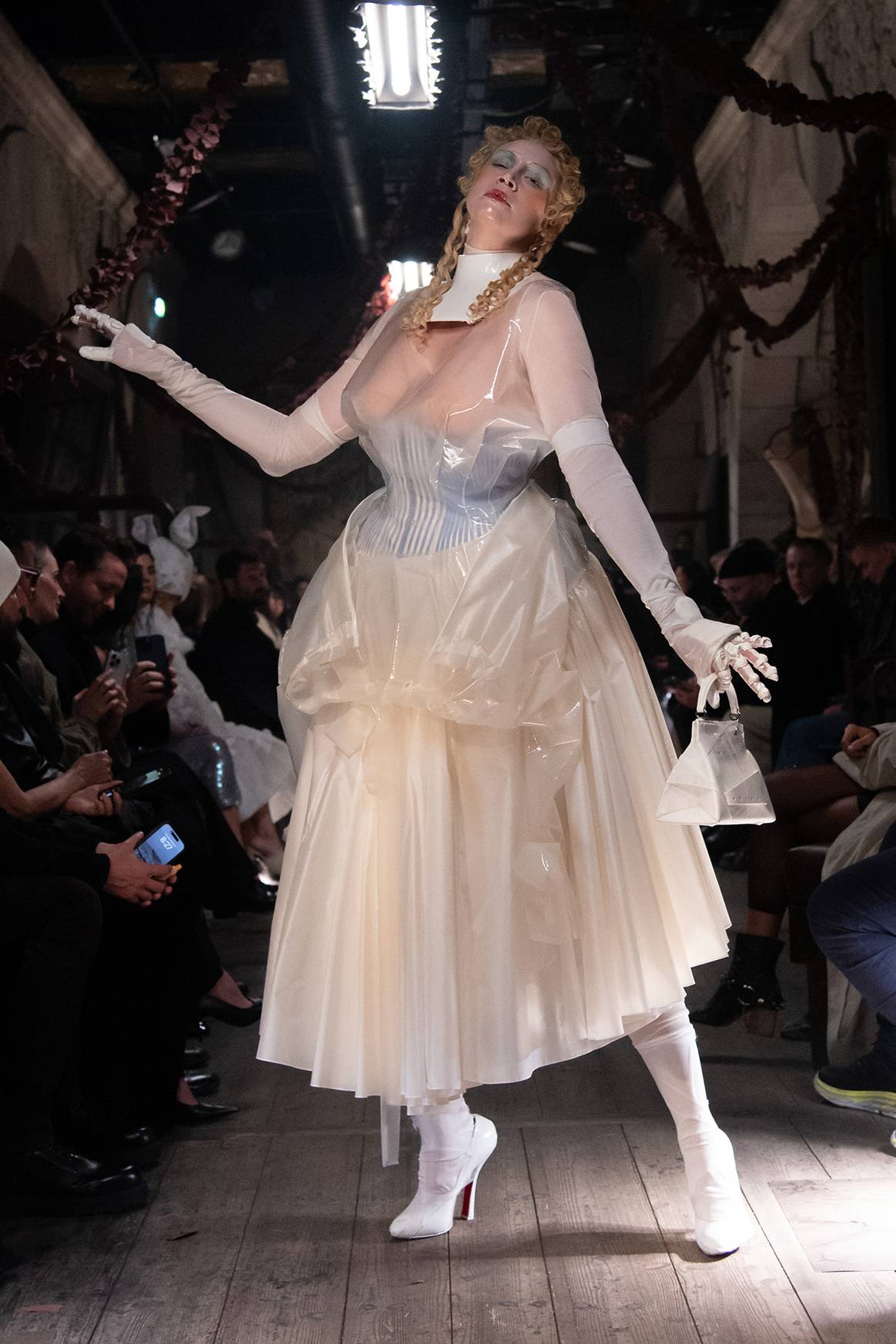If you’ve ever seen a Comme des Garçons fashion show, it is unlikely that you raced to order one of Rei Kawakubo’s catwalk looks, which are mostly steeped in abstract notions and avant-garde constructivism.
Yet it is in the ever-evolving landscape of style, and what we have come to expect of fashion, that we find ourselves trapped in false dichotomies. Commercial versus artistic. Wearable versus avant-garde. High street versus high concept. But as the industry matures and the lines between these supposed opposites blur, it is time to embrace a more nuanced understanding of fashion’s true nature.
Fashion as construct and idea
At its core, fashion is a language – a complex system of signs and signifiers that communicate far more than mere aesthetic preference. When Demna Gvasalia sends models down the Balenciaga runway in oversized suits (and lumpy trainers) reminiscent of 1980s power dressing, he’s not merely designing clothes; he’s constructing a narrative about gender, power, and nostalgia.
Yet, this conceptual approach need not be divorced from commercial viability. Jacquemus’ Le Chiquito mini bag, barely large enough to hold a lipstick, began as a tongue-in-cheek commentary on our obsession with accessories. It has since become a bestseller, proving that ideas can indeed translate into commercial success.

The commercial vs conceptual continuum
The notion that commercial appeal and artistic integrity are mutually exclusive is outdated at best, dangerously limiting at worst. Phoebe Philo’s tenure at Céline demonstrated that thoughtful, conceptual design could coexist with commercial success. Her minimalist aesthetics, rooted in ideas of modern femininity and functionality, resonated with consumers while earning critical acclaim.
Similarly, Virgil Abloh’s work at Off-White and Louis Vuitton bridged the gap between streetwear and luxury, challenging preconceptions about what constitutes ‘high fashion’. His designs, while deeply rooted in conceptual thinking about race, class, and culture, was a hit with consumers.
Catwalk dreams, retail realities
The runway show, long considered the pinnacle of fashion’s artistic expression, is evolving. Once a cloistered event for industry insiders, shows are now global spectacles, livestreamed to millions. This shift has forced designers to reconsider the relationship between catwalk fantasy and retail reality. Johnathan Anderson, after Loewe’s 10th anniversary show last week, summed it up: “I just think, there’s no point in showing clothes for clothing’s sake.”
Elsewhere, brands like Tom Ford, Burberry and Tommy Hilfiger have experimented with ‘see now, buy now’ models, collapsing the traditional six-month gap between runway and retail. While not universally adopted, this approach underscores the potential for synergy between artistic showcase and commercial strategy.
The rise of adaptive design
Perhaps the most compelling evidence of fashion’s multifaceted nature lies in the rise of adaptive design. Brands like Universal Standard and Nike are creating clothing and (singular) shoe designs that are both stylish and accessible to people with disabilities. This intersection of functionality, inclusivity, and style represents fashion at its most holistic – addressing real-world needs while maintaining aesthetic appeal.
Embracing complexity
As the fashion industry moves forward, it is crucial to resist the urge to categorise design into neat, binary oppositions. The most exciting developments in the industry occur when these supposed boundaries are transgressed. This was so timely needed and felt at the astonishingly beautiful John Galliano show for Maison Margiela in January this year, which was a coup in show and craftsmanship, of engineering, corsetry, make-up artistry, set design and simply breathtaking clothes.
The future of fashion lies not in choosing between art and commerce, concept and wearability, but in embracing the rich complexity that arises when these elements intertwine. It’s in this interplay – between the dream of the catwalk and the reality of the street, between the conceptual and the commercial – that fashion finds its true power to reflect and shape our world.







